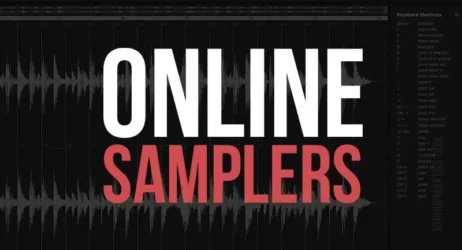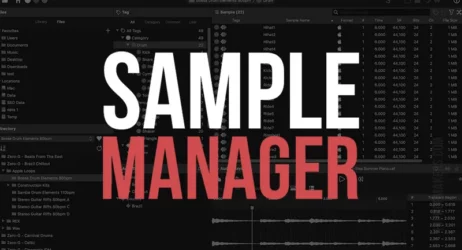This guide will explain what a microphone shock mount is, what they do, if they are necessary, and how to use it to record better audio.
What Is A Microphone Shock Mount?
A shock mount is a piece of hardware used to control the vibrations and resonance in a microphone. Microphone shock mounts are important because they prevent microphone vibration noise when used.
By absorbing or dissipating the vibrations, it results in a cleaner recording.
The primary purpose of a microphone shock mount is to protect your microphone from damage that could be caused by outside forces, like being dropped or hit. It also reduces handling noise and resonance that can come from using the microphone.
- What Is A Microphone Shock Mount
- Types Of Microphone Shock Mounts
- The Importance of Shock Mounts
- What Microphone Shock Mounts Do
- Is A Shock Mount Really Necessary
- Adding A Shock Mount
- How Do I Use A Shock Mount
- Are All Shock Mounts The Same
- Do Dynamic Mics Need Shock Mounts
- How Much Is A Shock Mount
- Best Microphone Shock Mounts
What Is A Microphone Shock Mount?
A shock mount is a piece that you attach to the microphone, and it prevents vibrations from being picked up or transferred by the microphone. It’s a piece of hardware used to control and control the vibrations and resonance in a microphone.

When recording vocals or instruments, you use it to ensure that you get the best sound possible and one that is not distorted by unwanted movement. It’s important to note that shock mounts can be used on standalone microphones and not just those found in a studio.
If you choose to buy a microphone shock mount, you should be aware that there are different types available.
Some shock mounts allow for the microphone to sit in a traditional position, and others give you the options to swivel, tilt, and more.
You must choose a shock mount with the necessary capabilities for the microphone you will be using.
The next thing to note is that there are different thread sizes. The standard size is known as an ‘XLR’ and is 3/4 inches in diameter.
If you have a microphone that uses this threading, you need to ensure that the mount you buy also supports it.
The last thing to consider before purchasing a microphone shock mount is the weight of the microphone.
Many mounts will have a weight limit, and some are even designed only for specific models.
It’s crucial that you check that the mount can support the weight of your microphone before making your purchase.
What Are The Different Types Of Microphone Shock Mounts?
There are typically three types of shock mounts:
1. Elastic Band Shock Mount
The first type is the elastic band shock mount. This mount type uses rubber bands or cords to suspend the microphone in mid-air. They are generally the most affordable option, but they also offer the least protection from noise and vibration.
2. Spring-Steel Suspension Shock Mount
The second type is the spring-steel suspension shock mount. This type uses metal springs to suspend the microphone and provide more protection against noise and vibration than elastic band mounts. However, they are also more expensive than elastic band mounts.
3. Inertial Suspension Shock Mount
The third type is the inertial suspension shock mount. This type uses dampers and high-friction materials to suspend the microphone and offer the best protection against noise and vibration. However, they typically only work with studio microphones and are the most expensive.
What Is The Importance Of Microphone Shock Mounts?
Microphone shock mounts are essential because they help protect the microphone from shocks and vibrations.
This is especially important in settings where there is a lot of noise or vibration, such as during a live performance.
A good shock mount will help keep the microphone stable and reduce any noise or vibration that the microphone might pick up.
Related: Best Condenser Microphones
What Does A Microphone Shock Mount Do?
A microphone shock mount isolates a microphone from unwanted vibrations, which can cause noise and distortion in the recorded audio.
The shock mount helps to keep the microphone stable by suspending it in an elastic material. This minimizes any movement or vibration of the microphone caused by external factors, such as people walking past or air conditioning units turning on and off.
By reducing this unwanted noise and distortion, the shock mount helps to produce cleaner sounding audio recordings.
Is A Shock Mount Really Necessary?
A shock mount is necessary to protect your microphone from bumps and vibrations.
The mic will be more susceptible to damage and produce unwanted noise without a shock mount. A good shock mount also ensures that your mic performs at its best by minimizing any extra noise.
However, if you’re using the microphone for speaking purposes and not recording, you may not need a shock mount.
How Do You Put A Shock Mount On A Microphone?
There are a few different ways to install a shock mount, but the most common is to place it around the microphone. This will help reduce any noise or vibration that might be caused by the environment or the user’s movement.
It’s essential to make sure that the shock mount is tightly secured around the microphone, as this will help ensure that there is minimal noise and vibration.
If the shock mount is too loose, it might not be effective in reducing noise and vibration.
Another way to use a shock mount is by attaching it to the stand. If you’re using a boom stand, for example, you can attach the shock mount to the vertical pole of the stand. This will help to reduce any noise or vibration that might be caused by movement on-stage.
Again, it’s essential to ensure the shock mount is securely attached to the stand and positioned over the microphone.
Related: What Are the 15 Types of Microphones
How Do I Use A Shock Mount?
Using a shock mount is straightforward, but there are a few things that you should consider.
Firstly, decide where the microphone will be placed.
If it is attached to a stand, you should connect the shock mount and position it over the microphone. Make sure that it is securely fixed in place.
If you’re placing the microphone on a table or other flat surface, you should attach the shock mount to the bottom of the microphone. You can also use a mic clip to attach the microphone to a table or surface.
Make sure the microphone is not touching any of its surroundings, including the table, cables, or walls.
Are All Shock Mounts The Same?
Not all shock mounts are created equal. There are various types of shock mounts, each with its unique benefits and drawbacks.
Some shock mounts are better at absorbing vibrations, while others prevent noise from entering or exiting the device.
It’s essential to choose the right type of shock mount for your specific application. If you’re looking for a mount that will absorb vibrations, you should select one specifically designed for that purpose.
If you’re looking for a mount that will prevent noise from entering or exiting the device, you should choose one specifically designed for that purpose.
Do Dynamic Mics Need Shock Mounts?
There is some debate over whether or not dynamic mics need shock mounts, but the consensus is that they don’t typically require shock mounts.
The reason is that they are usually more durable than condenser mics to withstand the occasional bump or vibration.
However, it’s important to note that if your dynamic mic has a fixed cable and it will be placed where there is lots of foot traffic, you should consider attaching a shock mount to its bottom.
How Much Is A Shock Mount?
There is no definitive answer to this question. The cost of a shock mount will depend on the size, make, and model of the shock mount, as well as the shipping and handling fees.
Generally speaking, a shock mount can range from around $15 to $100 or more.
Best Microphone Shock Mounts
Here are the most popular microphone shock mounts on Amazon.
Last update on 2025-10-28 / Affiliate Disclaimer
Summary of Microphone Shock Mounts
The shock mount is a piece of hardware that controls the vibration and resonance of a microphone. When used, microphone shock mounts prevent microphone vibration noise.
This guide has explained what a microphone shock mount is, what it does, if they are essential, and how to use them to record better audio.
If you’re looking for ways to improve the quality of your recordings, using a shock mount is a great way to do so.
Not only will it prevent unwanted vibrations from ruining your audio, but it will also improve the overall sound quality of your recordings.
I hope you now understand microphone shock mounts and whether or not you should add one to your recording studio.










